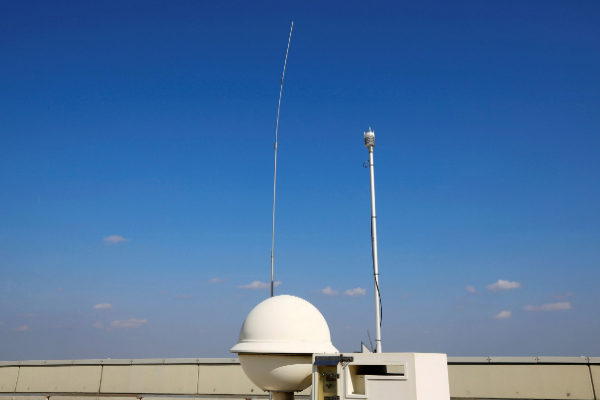- Russia: At least one doctor who treated the injured in the nuclear accident in Russia is contaminated
- Radiation. The neighbors of the region affected by the Russian nuclear explosion: "We don't believe anyone. This is a national crisis."
- Severodvinsk.Nyonoksa, the 'radioactive town': they cancel the evacuation but some neighbors leave
Unit 4 of the Beloyarsk nuclear power plant in the Urals was disconnected yesterday after a "false" security system alarm, according to Rosenergoatom, the state-owned company that manages the nuclear power plant. The activity stopped at 09.15, Moscow time, 8.15 in the morning in Spain. "The shutdown was carried out using the routine formula," said the agency, a member of the state nuclear corporation Rosatom.
It is the second nuclear incident that Russia records in 10 days. On the 8th day in Arjangelsk, in northern Russia, a small experimental nuclear reactor exploded developed to propel a missile on the outskirts of the Arctic town of Severodvinsk, killing seven people between scientists and military, injuring several more and generating a rise in radiation levels in the area.
The rooms where the victims of the explosion were found have been treated for radioactive contamination and there is an affected doctor, although the Arjangelsk government says that none of the toilets are hospitalized. "People are calm but there is discontent with the local authorities for the management of the situation," Irina, a neighbor of Severodvinsk, said yesterday by telephone, who confesses tired of "seeing so much paranoia on social networks."
Today the Russian Government has had to give explanations on why two measuring stations (Kirov and Dubna) whose job is to detect nuclear explosions in Russia, were disconnected after the Severodvinsk incident. Moscow, which is subject to an international radiation monitoring treaty, has alleged "network and communication problems".
PAUSE IN THE NUCLEAR CENTRAL
In the case of the Beloyarsk nuclear power plant, the radiation levels within and in the surrounding areas are in line with the usual values, according to Rosenergoatom. The nuclear power plant unit will resume operations as soon as the causes of the activation of the protection system are investigated.
The complex is located in the Sverdlovsk region, about 40 kilometers from Yekaterinburg and more than 1,400 kilometers east of Moscow. It started operating in 1964 and its first two blocks stopped operating recently after completing its life cycle. In July, this same Beloyarsk plant had another problem: one of its reactors stopped working due to a breakdown. That was not the first incidence of Russian nuclear power plants this year.
Also last month three of the four generating units at the Kalinin nuclear plant, 320 kilometers northwest of Moscow, had to be turned off after a transformer short circuit. It is currently working again.
In total, 10 nuclear power plants in Russia operate throughout its territory, all run by Rosenergoatom, according to the World Nuclear Association. Most were built in the Soviet era.
THE DANGER IN THE URALS
The Mayak complex, in the Ural region, operates as a nuclear processing plant, and has both military and civil purposes. It is suspected that it was the origin of a serious incident in 2017 when a radioactive cloud reached part of Europe.
In that month of September the sensors of specialized laboratories in Italy captured the cloud of a radioactive isotope of ruthenium that permeated the air in the old continent. In October the data was repeated. Detectors in Norway, Austria, Poland, Switzerland and Greece corroborated the measurements. And a study prepared by an international team of researchers and published on the PNAS portal has provided more clues about the origin of this radioisotope. Although they did not pose a health risk, there were concentrations that were up to 100 times higher than those recorded after the Fukushima accident in 2011.
Russia continued to decline all responsibility and attribute the pollution to the possible disintegration in the atmosphere of a satellite with radioisotope batteries. The fact that no more elements were identified in addition to ruthenium indicated that the source was not a plant, but a nuclear reprocessing plant. In November, finally, Russian meters in the Urals detected ruthenium.
Mayak's name is linked to a long list of incidents. The most serious, in 1957, is considered the third most important nuclear accident in history after those of Fukushima and Chernobyl. It affected an area with a population of 260,000 people: many of them were watching the football game at the city stadium.
In Chernobyl and Fukushima the broadcast lasted for days, and in this case it was a matter of hours. Even so, some calculations speak of 200 dead. 10,000 people were evacuated from their homes and 450,000 people were exposed to radiation. The Soviet regime kept this accident absolutely secret.
The country had lagged behind in the development of nuclear weapons after World War II. That caused them to begin a rushed program of research and development. The goal was to produce enough uranium and plutonium to develop the necessary weapons in the middle of the Cold War. That is why the Mayak plant was built quickly, between 1945 and 1948, neglecting security. The problems followed a decade later: in 1967, because of the drought, part of the heavily contaminated Karachay lake evaporated, and a tornado brought a large amount of cesium-137 to populated areas. About 42,000 people were affected.
According to the criteria of The Trust Project
Know more- Russia
- Chernobyl
- Europe
- Nuclear energy
Russia: Fear of a new Chernobyl after Russian missiles explode
Russia The neighbors of the region affected by the Russian nuclear explosion: "We don't believe anyone. This is a national crisis."
The Counter-Chronicle The mysterious leak of radioactive material from a Russian nuclear power plant

